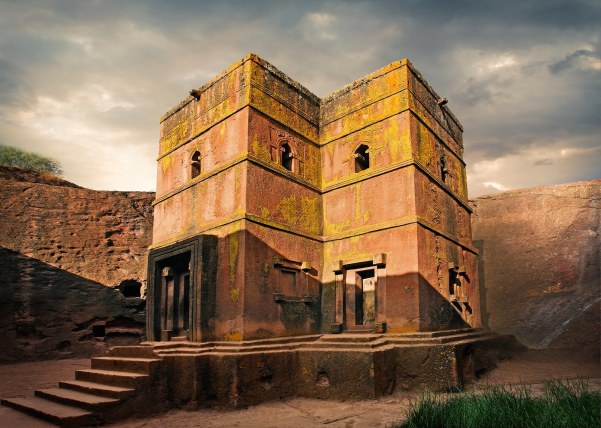
MAN MADE ATTRACTIONS
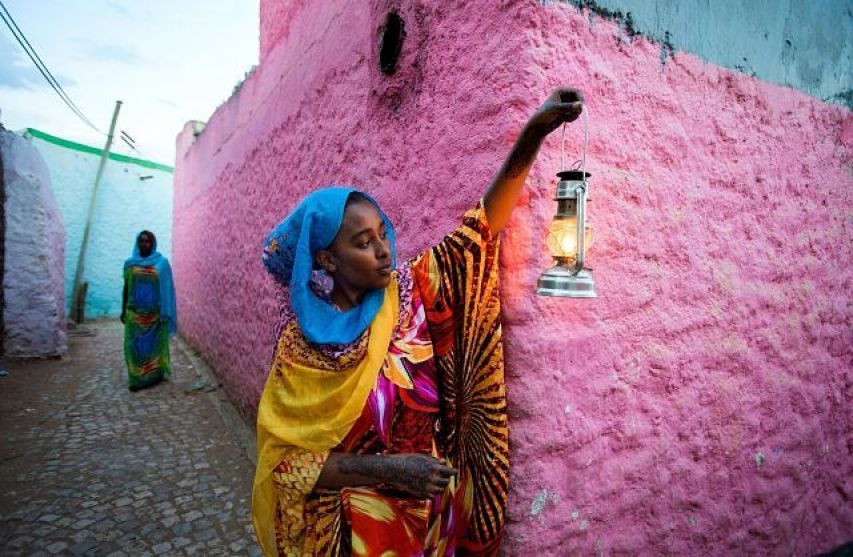
DISCOVER A DIFFERENT WORLD.
Lalibela
Eighth Wonder Of The World
Gondar
The City Of Castles
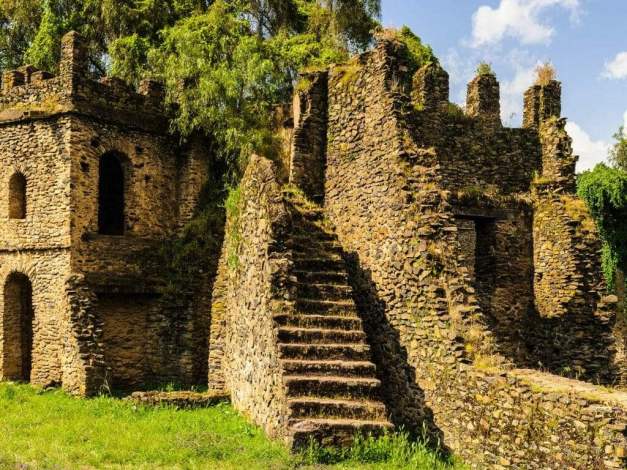
Gondar is the 17th-century capital of Ethiopia and the closest town to Sudan. Located on the northern shore of Lake Tana, it is one of the most prominent historical areas in Ethiopia.
Officially founded by King Fasiladas in 1632, the Gondarine period is considered to be the third major dynasty after the Axumite and Zagwe dynasties. The dynasty is historically important for the renaissance king's mobile camp and the introduction of a permanent capital. The attempt by King Fasiladas to end the Zagwe dynasty was successful and established Gondar as Ethiopia's capital from 1632 to 1868.
Gondar's 17th century castles reflect the strength of the dynasty and the power of its progressive rulers. The biggest and most magnificent castle of all, King Fasiladas' castle, which is still intact, was the first to be built. Seven of the dynasty's kings had their own castles built to show their power and independent, efficient ruling styles. What is special about the castles is that they demonstrate the progress in Ethiopian building styles and follow from the rock-building traditions of the Axumite and Zagwe kings.
Additionally, Gondar was and still is noted as an active religious center. Among all the churches in the town, Debre Berhan Selassie is especially famous for its typical Gondarine style and its ceiling.
Axum
Ethiopia's Oldest City
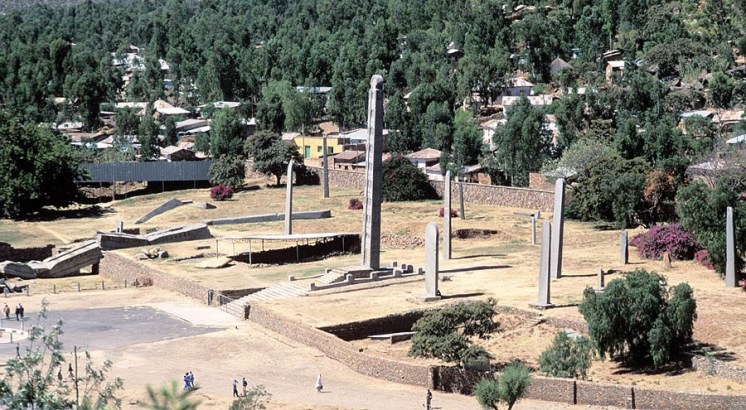
Axum, which lies about 1,000 kilometers north of Addis Ababa, was the second capital city of Ethiopia. This prominent Christian attraction is simply an open-air exhibition of Ethiopia's pre- and post-Axumite civilization i.e. from the 3rd century BC to the 10th century AD. This ideal site has been visited frequently for the last two millennia.
The Axumite kingdom was founded on the northern tip of Ethiopia at a place called Aksum by the native Sabean people. The creation of this kingdom was an indication of a power shift from the capital at Yeha to the fertile lands of Axum. Due to its proximity to the Red Sea in the North-East and the Indian Ocean coastal trade routes to the South, trade prospered in the kingdom. Axum grew into a prominent commercial center in the first century AD. Trade with the Arabs, Indians, Turks, Greeks, Persians, Romans and others strengthened Ethiopia's connection with the rest of the world.
The Axumite empire came into existence thanks to its hard working people. It witnessed tremendous growth between the first and sixth centuries AD. With a perfect continuation of successful governance, Axum became a real empire. Three languages were used as a communication medium. Greek was the language of the royal court, Sabean was used by the common people and Ge'ez, a later-developed language with its roots in the Sabean scripts, became a church language. As a result of strong economic dominance, coin mintage developed at this time and helped the Axumites to maintain and enhance trade. Gold, silver and bronze coins, which began to be minted around the 4th century, are still found exposed on the plains of Axum.
The introduction of Christianity in the early 4th century AD was one of the greatest achievements of the Axumite rule. It was during the time of King Ezana in 337 AD that Christianity was brought to Axum. Since it was the king who was the first to convert, Christianity easily reached the people under his rule. Since then, Ethiopia has remained a strong Christian state. The coins of King Ezana and his successors depict a cross, clearly indicating that the kings were Christian. On the other hand, the coins of kings before King Ezana in the pre-Christian era depict motifs such as moons, indicating paganism.
Axum reached its peak in terms of economic, political and social development in the fifth and sixth centuries. By then Christian Axumite kings had increased their influence by expanding their territory across the Red Sea. The whole horn of Africa, including Yemen, became a part of the Axumite empire. It was at this period that Axum became known as one of the four great empires of that time. Then in the 7th century Islam was brought to Axum by Muslim followers who sought exile there to escape from severe executions in the Middle East.
YEHA
Ethiopia's First Capital
Yeha is situated in the northern mountainous parts of the Tigray region. Although today this small settlement survives as a shanty town, it was once a site of great pre-Axumite civilization. It is believed to be Ethiopia's first capital. Yeha was first uncovered in a complex archeological excavation around a courtyard at the beginning of the 20th century. The first settlers in the area, the Sabeans, were the founders of the Axumite kingdom.
The temple of Yeha, with the wall in ruins on one side, is otherwise still unchanged and testifies to the advanced level of the people of those times. There is no trace of mortar being used to build the temple and its walls are believed to have been paved with gold on the inside.
The archeological excavations made in 1909, 1947 and 1973 reveal that this beautiful temple was destroyed by fire. Treasures such as gold rings, golden lions, stone-engraved inscriptions written in Sabean, stone-carved animals like the Walya Ibex (one of Ethiopia's endemic mammals), pottery works and others were uncovered. Some of these findings are displayed in the 4th-century church museum found in the same compound as the temple while others are displayed at the National Museum in Addis Ababa. The twelve underground formations and four other very deep cave structures (which seem towards lead to Yemen, Lalibela, Jerusalem and Axum), increase the area's importance both in terms of archeological research as well as tourism.
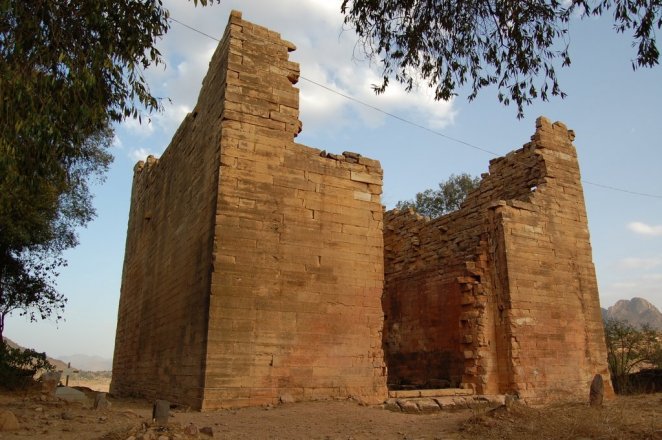
BAHIR DAR
By the Lake Tana
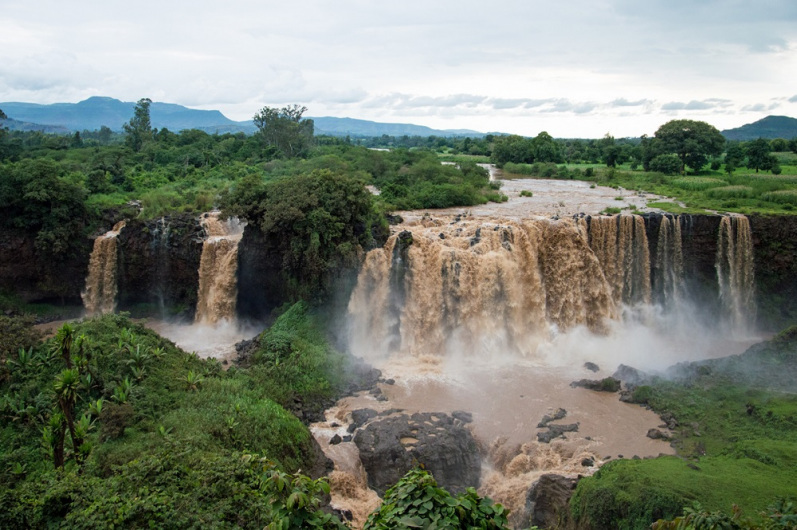
This park is found near the southern end of the Rift Valley system. Bordering on two beautiful Rift Valley lakes, Abaya and Chamo, it possesses extraordinary landscapes as well as exotic flora and fauna. The endemic mammal Swayne's hartebeest is found in this park. The lion, zebra, leopard, gazelle, baboon and other mammals are common there. The two lakes in the park abound in exotic marine life. Hippos and crocodiles live there in colonies.
HARAR
Popular Islamic City
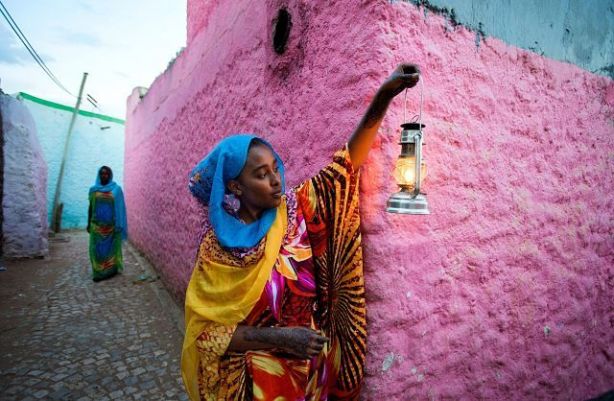
Harar is one of the most impressive Ethiopia’s historic destinations. A walled city, which stands on the eastern wall of the Great Rift Valley, is the provincial capital of Ethiopia's largest administrative region, Hararge. The city's location gives wonderful views of the surrounding country - the vast Danakil desert to the north, the fertile Harar mountains to the west, and the cattle-rich Ogaden plains to the south.
Harar was a strongly religious city and was closed to visitors until 1887 when Menelik restored central rule. With its 99 mosques, including the 16th century Grand Mosque, it is considered to be the fourth holiest city in Islam after Mecca, Medina and the Dome of the Rock in Jerusalem.
Medhane Alem church, built at the end of the 19th century, is in the town centre and contains excellent examples of traditional regional art.
The Community Museum, also in the town centre, has displays related to the way of life in earlier times.
The 16th century Grand Mosque, with its beautiful twin towers and a slender minaret, lies on the road to the Erer Gate. Women are not permitted inside the mosque.
The vibrant market place is regarded as one of the most colourful in Ethiopia.
Off the road from the Sauga Gate to the main market lies Ras Mekonin's house where Haile Selasssie spent most of his childhood.
The Ahmar Mountains around Harar produce some of the best coffee in Ethiopia.
The Hyena Men of Harar collect offal and bones to feed wild hyenas usually about 100 meters outside the Fallana Gate of the old city walls. Hyenas appear just after sunset to take food from their hands. There is a fee charged for watching. Harar has gained fame for its silversmiths, and there are beautiful necklaces, bracelets and chains to be found in the market. The basketry is also impressive. There are two colourful markets in Harar, the Christian and the Muslim, which are separated from one another.
Al-Negash
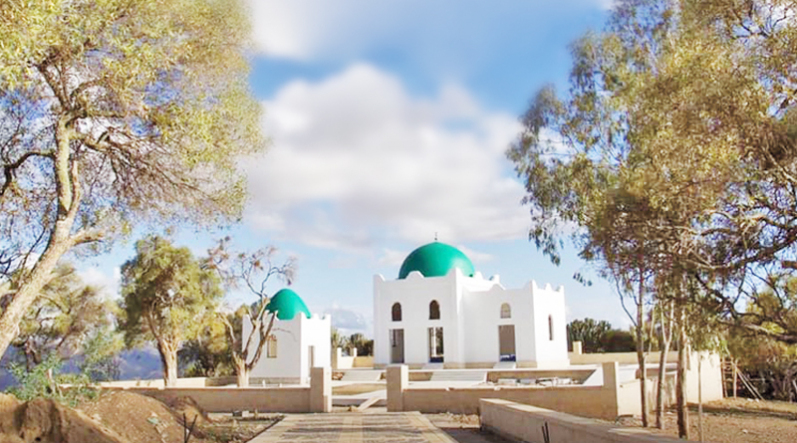
Negash, some 10 km after Wokro lies on a plateau commanding a magnificent view of the surrounding area. Negasi got its name from Tigrigna word, the local language means” king. Negashi is an Arabic zed of the world.
The history of Negash begins from the 7th c AD if not before. Although Negashi is as old as the faith of Islam itself, it is the country’s best unknown place of Islamic warship. History has it that the early followers of Prophet Mohammed (S.A.W) were denied the fundamental rights to pursue the religion they preferred and were harshly persecuted by the Qurush tribe, The mercantile ruler of Mecca. In order to maintain the very survival of his religion, the prophet had to seek a safe hide out for his followers.
Yonder, a country where in no one is wronged: a land of righteousness, deport thither: and remain until it pleased the lord to open your way before you” said the prophet pointing to the kingdom of Abyssinia. The then ruler of Ethiopia or Negash granted asylum to the first refugee, eleven men and four wives who entered his territory in the 7th C month of the year of Mohammed’s mission (615). The second hijra (flight) consisted of 101 Muslims. The Qurush are said to have asked the Ethiopian ruler to hand over the exiles to them, but the king reported to have declared “if you were to offer me a mountain of gold, I would not hand over these people who have taken refugee with me”. The notable among the refugee were the prophet’s daughter, Requya, his future wife Umma Habibia and Umma Salama or Hindi and his cousin, the leader of the religious exile, Ja’afer Ibn Abu Talib. Many of these Muslims stayed in the country until they died and were buried at the scared town of Negash.
The negashi of the habeshat as the king is known in the Arab world that died in 630 who also was buried in the same place.
Stuart Murno-Hay in his book “Axum, an African civilization of late antiquity, states that the Negashi was buried in Wukro”. A fact which taddess Tamerat corroborates in his book” church and state in Ethiopia” in fact wukro and Negashi 10 km apart.
The prophet is said to have remembered the Negashi with affection and pronounced some prayers for him when he heard the news of the death of the compassionate Ethiopian ruler, this has apparently created to reason Taddess “the tradition that the king was in face the converted to the new religion and he tradition has in the end led to his being considered as a Muslim saint. The Ethiopian Muslim tradition and not very few Arab writers audaciously assert that the then Negasi of the Habeshat was evevtually converted to Islam, making him the first Ethiopian and even the first non-Saudi Muslim in the world.
The prophet and the Negashi had a very good contact according to the British researcher.
Murno-Hay, it was the Negash himself who contracted the marriage of Umma Habibia to Muhammed (S.AW) when she returned to her country in 628. Hancock and Pan Hurst in their book “under Ethiopian skies” confirm this fact and the king has given Umma Habbia a dowry of 400 dinar of gold at the time of the marriage. Moreover, the prophet had established a diplomatic lies with the king and had sent him a letter a content of which according to Murno-Hay was reported and published by Dunlop in 1940, Ethiopia to whom the entire Muslim world owes a great debt for the gracious hospitality and secure shelter her king and people offered is said to have been exempted by the prophet from Jihad (the holy war). Source: different Ethiopian and foreign scholars
